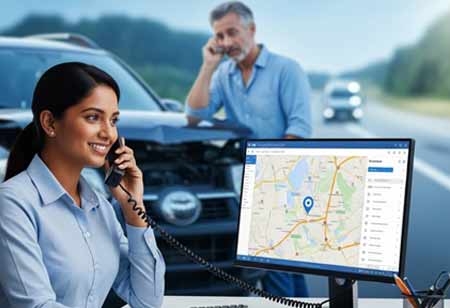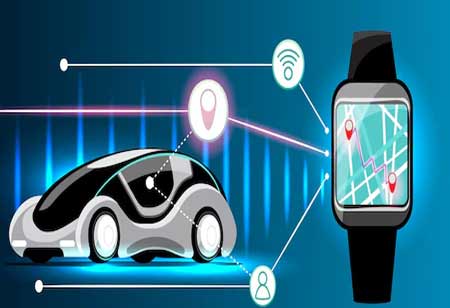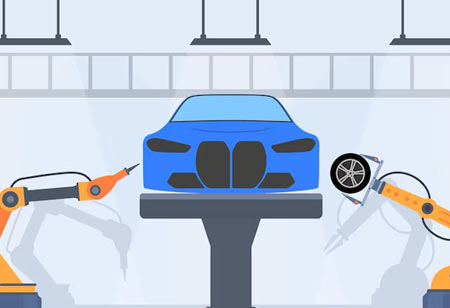THANK YOU FOR SUBSCRIBING
THANK YOU FOR SUBSCRIBING
Be first to read the latest tech news, Industry Leader's Insights, and CIO interviews of medium and large enterprises exclusively from Auto Tech Outlook

By
Auto Tech Outlook | Tuesday, October 07, 2025
Stay ahead of the industry with exclusive feature stories on the top companies, expert insights and the latest news delivered straight to your inbox. Subscribe today.
Mobility has always been a sweet pillar of economic and personal freedom. With increased vehicles on the road, it has become even more imperative for consistent roadside support to be prioritized among drivers and service providers alike. A seamless roadside assistance network solution is another vital layer of security where vehicles that become inoperable due to breakdowns, flat tires, dead batteries, or other typical issues can receive help. As technology and consumer expectations change, such systems must become more intelligent and interconnected. These systems must react to increases in efficiency, safety, and consistency of service. This sector transformation is further digitizing what roadside assistance will look like, making it increasingly a space of responsiveness, scalability, and transparency.
Increased Dispatch Efficiency and Real-Time Communication
One of the significant advances of roadside assistance networks is better dispatch coordination. They mainly comprise call centers, paper records, and manual routing, which increased wait times and reduced service visibility. Using digital platforms, one can track and automate job assignments and streamline communication between dispatch centers, field technicians, and vehicle owners. Integrated systems apply location information to connect requests needing service with the nearest available provider, thereby slashing response times and streamlining resource deployment.
Such automation enables service providers to serve larger volumes with uncompromised quality and gives customers a better view of arrival time and service status through mobile applications. This two-way communication added by these systems creates room for live updates, reducing the range of uncertainty for the ultimate experience. The dispatch system can analyze patterns in service requests and traffic conditions to forecast peak demand periods and adjust resource allocation. The operational improvements bring speedier resolutions while promoting optimized workforce utilization and reduced overhead.
Data Integration and Predictive Maintenance Support
Modern roadside pro-back-up solutions are becoming the core of the larger ecosystems of vehicle support. Linking such applications as telematics and vehicle diagnostics systems is a massive key towards proactive service strategies. For example, sensor-equipped vehicles connected to platforms communicate real-time information to alert of upcoming trouble before a severe failure occurs. Predictive awareness will avoid road incidents, allowing one to remind users of battery replacement, tire rotation, or any other preemptive action.
From a customer perspective, technicians come to the scene informed or "armed" with all the appropriate tools or replacement parts necessary to fix the issue during their first visit, empowered by the presence of such health data concerning the vehicle. It also reduces diagnostic time at the scene since it enables better fault determination. In some cases, remote assistance may be feasible through technical support or system resets, allowing the user to avoid waiting for an actual intervention. Such features not only improve customer satisfaction but also reduce operational costs.
Scalability and Customization along Multiple User Lines
Roadside assistance network solutions are versatile and can work across an extensive range of users, including individual drivers, fleet operators, insurance providers, and vehicle manufacturers. Each group has specific needs and operational goals; therefore, these modern platforms support customization based on various service levels, billing models, and performance metrics. For example, roadside assistance is not merely a support service to fleet operators but an integral part of uptime management. Roadside data should then be integrated with fleet management software for continuous monitoring and speedier interventions to keep vehicles rolling and minimize downtimes.
On the other hand, insurance providers would benefit from roadside assistance data to understand risk profiles better and innovate additional services for improved customer loyalty, such as tiered support packages or integration of roadside events with claims processing. Thus, the driver receives help without turning in a separate service request. It therefore creates an integrated ownership experience for the driver, having roadside support within warranty or connected car services.
Scalability is also important to provide growth and meet seasonal fluctuating demand. Roadside assistance platforms, supported by cloud-based infrastructure and modular service options, can enlarge or shrink according to what is used at a given moment, while ensuring uniform performance without incurring excess cost. Because third-party service providers can be integrated into a network through standardized APIs, seamless growth of networks occurs while ensuring that controls over operations remain unified. This means that network operators can expand service geographically while controlling service quality across regions through a consistent oversight by centralized performance monitoring.
These developments represent the more general trend towards smart mobility and the overall digitization of transport systems. Viewed as a reactive service, roadside assistance is now becoming proactive and is enabled using data to allow it to travel more safely and reliably. Improving coordination, emerging predictive technologies, and building strategy-scalable solutions tied directly to the numerous user needs will ensure that roadside assistance readies itself for the future of connected transportation.
 Copyright © 2025 AutoTech Outlook. All Rights Reserved | Privacy Policy | Subscribe | Sitemap | About us | Feedback Policy | Editorial Policy
Copyright © 2025 AutoTech Outlook. All Rights Reserved | Privacy Policy | Subscribe | Sitemap | About us | Feedback Policy | Editorial Policy 



